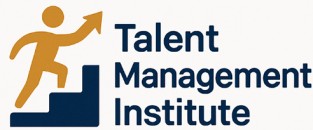
Understanding Applicant Tracking Systems (ATS)
Demystifying the Role of ATS in Recruitment
Applicant Tracking Systems, commonly referred to as ATS, are crucial tools in the modern hiring process. These systems are designed to assist recruiters and hiring managers by automating the early stages of recruitment. ATS tools streamline the process of managing and evaluating applications, saving valuable time and resources for companies. Initially, the traditional ATS was created to help filter candidates by scanning resumes for specific keywords related to the job description. This process ensures that resumes matching the criteria are highlighted, making it easier for recruiters to identify top talent. However, while these systems are efficient in managing the bulk of applications received, they also present challenges for job seekers. For candidates, navigating ATS platforms can be daunting. Resumes need to be ATS friendly, meaning that they should be formatted in a way that the system can easily read and extract relevant information. Failure to optimize resumes for ATS tools often results in qualified candidates being overlooked, impacting their job search experience. Understanding how an applicant tracking system evaluates candidates is key to successfully passing through these digital gatekeepers. Job seekers should focus on tailoring their resumes to closely align with the job description, ensuring the use of right keywords to enhance visibility Understanding the Veterans Affairs Talent Management System. As more companies integrate ATS into their hiring processes, the need for awareness and adaptation becomes evident. Familiarizing oneself with different ATS platforms, from recognizing their interface to understanding their mechanics, can greatly improve a candidate's chances of progressing to the next stage of the hiring process. Moreover, keeping abreast of future trends in ATS will be crucial for both job seekers and recruiters alike.The Impact of ATS on Job Seekers
The Challenges of Navigating ATS-Driven Processes
Applicant Tracking Systems (ATS) have become an integral part of the hiring process for many companies. They offer a structured, efficient way to manage applications and streamline the selection of top talent. However, for job seekers, these systems can often complicate their search for the right job. Understanding how ATS platforms impact the recruitment process is crucial for navigating these challenges effectively.
ATS tools are designed to help recruiters save time by automating numerous aspects of the job application process. They work by scanning resumes for keywords that match a job description and filtering out those that don’t meet the criteria. While this seemingly efficient process helps companies manage large volumes of applicants, it presents a unique set of challenges for candidates.
One main issue is that resumes need to be ATS-friendly. This means job seekers must tailor their resumes to align with the system's search for specific keywords. Unfortunately, an application that doesn’t include the right keywords or isn’t formatted correctly might be overlooked, even if the candidate is ideally qualified for the position.
Moreover, candidates often find themselves applying blindly to several jobs without any feedback, as many traditional ATS systems do not provide insight into application status. This lack of transparency contributes to a frustrating job search experience. The candidate experience can be significantly impacted by how well a company’s ATS manages these interactions.
In conclusion, while ATS systems are indispensable for recruiters, they add layers of complexity for job seekers. For those aiming to enhance their chances within an ATS framework, carefully crafting an ATS-compliant resume is one key strategy. Additionally, exploring the potential of using talent management systems can provide insights into optimizing the job search process.
Common Mistakes Job Seekers Make with ATS
Overcoming Hurdles in Applicant Tracking Systems
Understanding the complexities of Applicant Tracking Systems (ATS) is essential, but what often trips up job seekers are common mistakes that can derail their applications. Here's how these mistakes happen and how to avoid them:- Not Tailoring Resumes: Often, job seekers submit the same resume for multiple applications. ATS platforms are designed to filter resumes based on specific keywords from the job description. Customizing your resume for each job posting, ensuring they reflect pertinent keywords, is crucial.
- Ignoring Formatting Guidelines: Traditional ATS tools may struggle with overly elaborate resume formats. Opting for simple, clean formatting can improve the likelihood of your resume being read correctly and reaching hiring managers.
- Misunderstanding Keywords: Including irrelevant or too many keywords can hurt your chances. The best practice is to integrate keywords naturally within your experience and skills sections.
- Neglecting the Job Description: Each job description provides a vital roadmap for preparing your application. Tailoring your application to reflect the requirements and skills listed is key to maximizing your visibility on ATS platforms.
- Skipping Sections of Applications: Overlooking or skipping sections when filling out applications on ATS systems can lead to incomplete submissions, which are less likely to be viewed favorably by recruiters.
Strategies to Navigate ATS Effectively
Strategies to Work Around the Limitations of ATS
When confronting the challenges posed by Applicant Tracking Systems (ATS), strategic adaptation can be the key to unlocking opportunities otherwise hampered by these systems. Here are some effective tactics to enhance your resumes and improve the chances of standing out in the job application process:- Keyword Optimization: Tailor your resume by incorporating relevant keywords found in the job description, aligning with what ATS tools are programmed to detect. Each job posting is unique, so customizing your resume for every application is essential.
- Use an ATS-Friendly Format: Avoid complex formatting such as tables, images, or graphics. Instead, use standard resume sections and fonts that are easily readable by tracking systems. A clean and organized structure helps the system better parse your information.
- Maintain Simplicity in Contact Information: Include your full name, email, and phone number in a straightforward manner at the top of your resume. Use a professional email address that aligns with your personal brand.
- Focus on Relevant Experience: ATS systems primarily scan for relevance to the position. Highlight experiences and skills that directly correlate with the job requirements, showing you're a top talent fit.
- Leverage Tools for Testing: Utilize resources that simulate how your resume will fare when processed by ATS platforms. By doing so, you can make necessary adjustments to enhance your resume ats score.
- Mindful Job Applications: Apply only to positions where you meet the majority of the qualifications. This approach saves time, increases your chances with ATS, and avoids the pitfall of getting filtered out prematurely.
The Role of Talent Management in Addressing ATS Challenges
Enhancing Talent Management to Overcome ATS Obstacles
Talent management plays an integral role in mitigating the complications experienced by job seekers navigating Applicant Tracking Systems (ATS). These systems are essential in the hiring process but can inadvertently create barriers. Companies and hiring managers need strategic solutions to optimize their use. Firstly, embracing an empathetic approach towards job applicants is crucial. This means recognizing potential pitfalls with ATS and striving to enhance the candidate experience. Often, an over-reliance on keywords may hinder top talent. Developing ATS-friendly resume guidelines that align with the job description can help candidates to be considered more thoroughly by the system. Moreover, recruiters and hiring managers should use ATS as a tool to complement, not replace, human judgment. This involves looking beyond the automated screening to identify candidates who may not be immediately recognizable as top talent by the system. Encouraging personal engagement can often reveal skills and experiences not evident through ATS filtering alone. In adapting to advancement in technology, companies should continually update their ATS platforms. As ATS evolves, new features may simplify job applications and reduce time spent on both sides of the hiring process. Keeping up with best practices in the field can save time and ensure that tracking systems are facilitating rather than obstructing, the recruitment of top talent. Lastly, the role of talent management extends to providing training for HR professionals on utilizing ATS tools effectively. Ensuring that everyone involved in the recruitment process understands the strengths and limitations of their tracking systems can lead to a fairer, more efficient hiring process. Understanding the relationship between ATS and successful talent acquisition can unlock the full potential of recruitment strategies, ultimately benefiting both companies and candidates.Future Trends in ATS and Talent Management
Emerging Directions in the Realm of ATS and Talent Management
As we look towards the future, applicant tracking systems (ATS) continue to evolve, and their integration with talent management is expected to bring forward significant advancements. These changes are not just about improving the functionalities of existing ATS platforms but also about reshaping how hiring processes accommodate the needs of both job seekers and hiring managers. To better understand where ATS systems are headed, let's explore some emerging trends:- Enhanced AI Integration: Artificial intelligence is increasingly being embedded in ATS tools to streamline the hiring process. By learning from data, these systems can predict best-fit candidates and automate resume screening, saving precious time for recruiters.
- Increasing Focus on Candidate Experience: Future applicant tracking systems will prioritize candidate experience, aiming to make the application process smoother and more intuitive. ATS platforms are beginning to incorporate real-time feedback mechanisms and personalized job recommendations to engage potential hires better.
- Keyword Optimization and Inclusivity: Traditional ATS systems relied heavily on keywords, sometimes at the expense of qualified candidates. Newer systems are expected to move beyond simple keyword matching and employ more nuanced methods that consider the overall context of resumes and applications, promoting a fairer hiring process.
- Data-Driven Insights: The next wave of ATS platforms will offer more robust data analytics tools, providing HR teams with actionable insights to refine their talent strategies and optimize their recruitment processes.
- Seamless Integration with HR Systems: Modern ATS systems will merge seamlessly with broader HR systems, ensuring that tracking information, job descriptions, and feedback loops are efficiently managed alongside other HR activities. This will help companies create a cohesive and comprehensive talent management ecosystem.



-large-teaser.webp)









